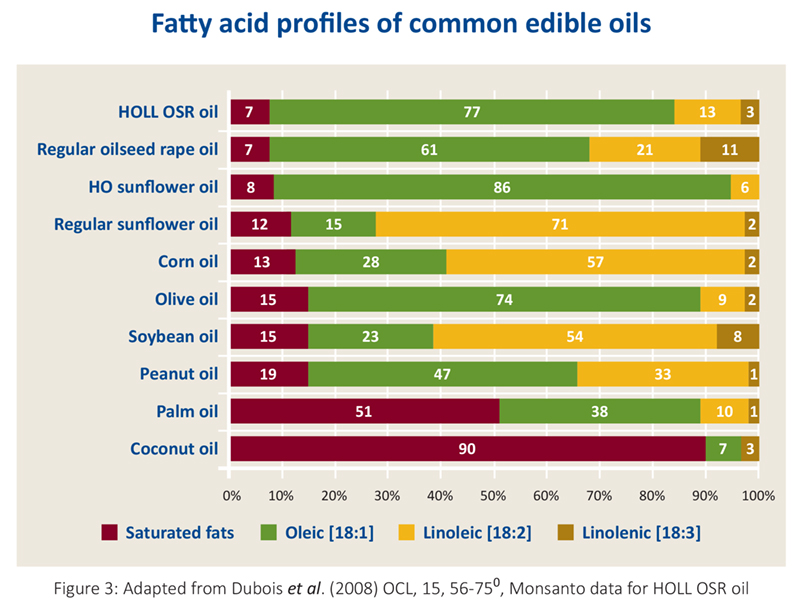
Why HOLL OSR oil is a Better Option
28-Apr-2016
....It has more than 75% of oleic acid (Fig. 3)
-
Replacing saturated fats in the diet with unsaturated fats contributes to the maintenance of normal blood cholesterol levels, and oleic acid is an unsaturated fat (EFSA 20111 ).
....Even with significantly reduced linolenic acid content, which leads to a better frying performance, HOLL OSR oil still has a good content of Omega 3 (> 0,6g alpha-linolenic acid per 100g and per 100kcal2), and contains a goodamount of Omega 6 (linoleic acid).
-
Omega 3 and 6 are two essential fatty acids which contribute to the maintenance of normal blood cholesterol concentrations (EFSA 20092a & 3).
.... It has one of the lowest level of saturated fats compared to most vegetable oils (Fig. 3), providing a good option to reduce the daily intake of these “bad fats”.
-
Dietary guidance recommends a reduction of saturated fats in the diet because they are related to cardiovascular events (EFSA 20106).
....It has only trace amounts of trans fats.
-
Trans fatty acids are associated with coronary heart disease; dietary guidance recommends to eliminate trans fats as much as possible (EFSA 20047 & EFSA 20108).
-
Helps food manufacturers meet lower trans fats levels in finished product.
....It has a good natural vitamin E content (FEDIOL9).
-
Vitamin E protects lipids, proteins and DNA against oxidative damages (EFSA 201010).

